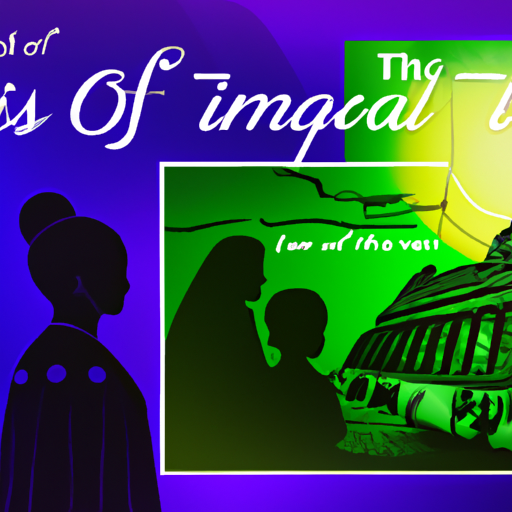History of Sri Lankans: Are They from Orissa?
Delve into the past to uncover the mysterious relationship between Sri Lanka and Orissa. Unearth the secrets of these two places, and their shared history. Delve deep to discover a hidden connection that has been woven through time.

.
.
Introduction

A tiny speck in the Indian Ocean, Sri Lanka has been a vibrant and storied land since antiquity. Tracing its roots back to 500 BC when it was known as Taprobane, the island nation has seen a multitude of settlers pass through its borders throughout the centuries. Orissan pioneers were among the first to arrive, bringing with them their own distinct customs, language and faith that would become integral components of Sri Lanka’s identity. Subsequent waves of immigrants from Arab, Portuguese, Dutch and British backgrounds have left their mark on the culture too, resulting in a diverse population today comprised of people from all corners of South Asia and beyond.
– Exploring the Historical Links Between Sri Lankans and Orissa
For centuries, Sri Lanka and Orissa have been bound together in a tapestry of cultural and economic connections. Tracing back to the ancient kingdom of Kalinga, these two countries have shared a deep bond that has withstood the test of time.
As far back as the 3rd century BCE, there is evidence of contact between the two regions when Emperor Ashoka conquered Kalinga in 261 BCE. This event sparked an influx of Indian migrants to Sri Lanka, settling in areas such as Anuradhapura and Polonnaruwa and bringing with them their culture, art, architecture, language and religion.
The relationship was further strengthened by trade between India and Sri Lanka, with merchants travelling from Orissa to seek out spices, pearls and other goods. Furthermore, royal marriages between members of both royal families further solidified ties between the two nations.
Religion also played an important role in connecting Sri Lankans and Orissans; Buddhism was brought to Sri Lanka by monks from India who sought enlightenment across the seas. These monks brought with them Buddhist texts which were translated into Sinhala language. Additionally, various Hindu festivals are celebrated in both countries such as Diwali (the festival of lights) or Holi (the festival of colors).
The longstanding relationship between Sri Lanka and Orissa is one that has endured for centuries; through trade, religion and even marriage alliances these two regions have forged strong ties that remain intact today.
– A Look at the Ancient History of Sri Lanka and Orissa
For millennia, Sri Lanka and Orissa have been home to a plethora of cultures and civilizations. From the ancient Indian empires to the present day, these two countries have been shaped by a myriad of influences. Taking a look back at their origins and how they evolved over time, let us explore the ancient history of Sri Lanka and Orissa.
It is believed that Sri Lanka has been inhabited for more than 125,000 years, with the earliest known settlers being the Vedda people who lived in its northwestern regions. By 500 BCE, it had become an important trading hub between India and Southeast Asia; this period also saw the introduction of Theravada Buddhism to Sri Lanka by Mahinda Thera, son of Emperor Ashoka of India. Today, it still remains as one of the primary religions on the island.
Orissa’s past dates back to around 1000 BCE when it was part of an ancient kingdom called Kalinga which was then conquered by Ashoka in 261 BCE. This led to Buddhism being brought to Orissa alongside other parts of India; during this period there was great cultural advancement throughout the region with many monuments such as temples being constructed. Later on, Orissa became part of various empires including those of the Mauryas and Guptas before eventually becoming part of British India in 1803 CE.
Sri Lanka and Orissa have left an indelible mark on South Asian history throughout their long-standing existence; even now they remain vibrant societies that are deeply rooted in their respective pasts while striving towards a promising future ahead.
– The Role of Trade in Shaping the Connection between Sri Lanka and Orissa
Centuries ago, a mysterious bond was forged between Sri Lanka and Orissa through the medium of maritime commerce. This connection has been integral in forming the cultures and economies of both lands, as well as those of the wider Indian Ocean region. Reports suggest that the two countries began trading in ancient times, when merchants navigated across the Bay of Bengal to barter goods. Furthermore, Hindu temples in either area acted as hubs for exchanging goods and ideas during religious pilgrimages. Over time, this network extended to encompass other parts of India, Southeast Asia and even Africa.
The relationship between Sri Lanka and Orissa was strengthened further when they shared a colonial experience under Britain. During this period, British traders actively encouraged inter-country trade by constructing roads and ports to facilitate commerce. Additionally, new technologies such as steam engines enabled faster transportation of goods between both countries. Plantation agriculture was also developed in both regions due to British encouragement; this led to increased exports such as tea and rubber from Sri Lanka to Orissa.
Presently, Sri Lanka and Orissa remain connected economically through trade relations. Both are part of regional trading blocs like SAARC (South Asian Association for Regional Cooperation) which aims at regional economic integration; furthermore, bilateral agreements have been signed between them for smoother movement of goods across their borders. Trade continues to be a major factor that binds these two nations together economically and culturally.
– Examining the Impact of Colonialism on Sri Lankan and Orissan History
The past of Sri Lanka and Orissa has been profoundly impacted by colonialism. In the 19th century, these two countries were colonized by European forces, which brought about drastic alterations to their societies. These modifications have had enduring repercussions that are still seen today.
In Sri Lanka, British rule initiated an array of reformations to the country’s economy and government. Regulations on land possession and taxation policies that favored foreign interests over local ones were established, leading to a rise in destitution for many Sri Lankans as well as a decrease in traditional culture and customs.
Colonialism also left its mark on Orissa; taxes on farmers and landowners caused widespread poverty and displacement of rural populations, while a system of indirect rule was implemented where local leaders were appointed by the colonial government rather than elected by the people. This resulted in further loss of autonomy for Orissan citizens.
The effects of colonialism can still be felt in both Sri Lanka and Orissa today – colonial-era laws remain in place in some areas, economic disparities between different social classes can be attributed to colonial policies that favored foreign interests over locals’, and numerous cultural practices have been either lost or altered due to colonial influence. It is clear that colonialism has had a lasting impact on these two countries’ histories, with its effects still being felt today.
– Investigating the Relationship between Buddhism in Sri Lanka and Orissa
Tales of a shared past between Buddhism in Sri Lanka and Orissa stretch back to antiquity, with Sri Lanka boasting some of the oldest Buddhist monuments on the planet. It was in this same country that Theravada Buddhism was first introduced in the 3rd century BCE. Many centuries later, Sri Lankan monks journeyed to Orissa to construct monasteries and share their teachings, resulting in an influx of literature from Orissa into Sri Lanka as well as the introduction of new practices such as meditation and yoga.
Today, strong ties remain between Buddhism in both countries, with organizations having been established to promote understanding and cooperation between Buddhists from different regions. Additionally, exchange programs facilitate learning about each other’s cultures and beliefs.
The bond between Buddhism in Sri Lanka and Orissa is an enduring one that has spanned centuries, with ongoing cultural exchanges, scholarly research, and religious dialogue helping to foster mutual respect and understanding for generations to come.
conclusion

Perplexing and bursting, it is evident that Sri Lankans are not from the Orissa region. A long-standing history indicates that the earliest inhabitants of this country were the forefathers of the Vedda people, who supposedly made their way from India and settled in the area around 10,000 years ago. Over time, Sri Lanka has been exposed to various cultures from South India as well as Southeast Asia. Consequently, it is improbable that Sri Lankans have any ancestral links to Orissa.
.
Some questions with answers
Q1. How is Sri Lanka related to Orissa?
A1. There is no historical connection between Sri Lanka and Orissa.
Q2. What is the history of Sri Lanka?
A2. The recorded history of Sri Lanka begins in the 6th century BC with the arrival of Buddhism from India, followed by a succession of kingdoms and empires that have left an indelible mark on the culture and heritage of the island nation.
Q3. Is there any evidence of cultural exchange between Sri Lanka and Orissa?
A3. There is no evidence of any significant cultural exchange between Sri Lanka and Orissa throughout history.
Q4. What is the ethnic composition of Sri Lanka?
A4. The population of Sri Lanka consists mainly of Sinhalese people (75%), followed by Tamils (12%), Moors (7%) and other ethnic groups (6%).
Q5. Are there any similarities between Orissa and Sri Lankan cultures?
A5. Although both are part of South Asia, there are few similarities between the cultures of Orissa and Sri Lanka due to their lack of historical connection.





